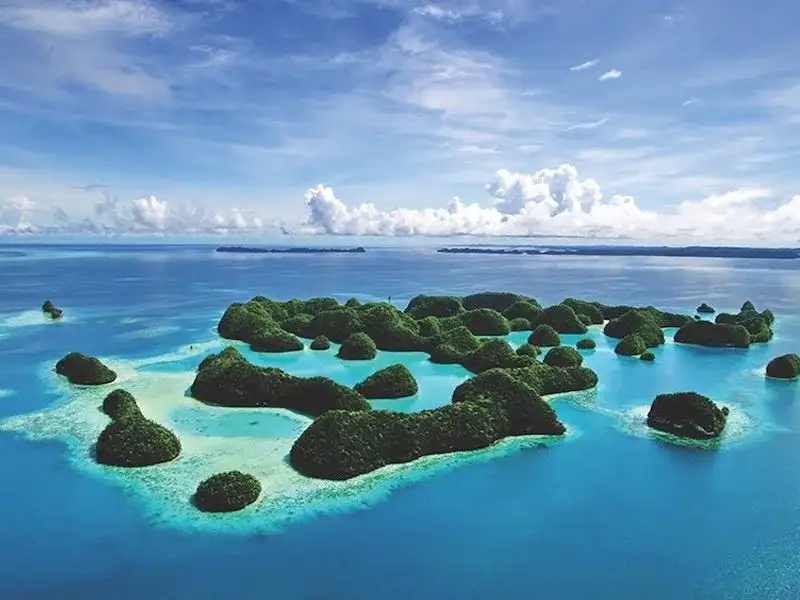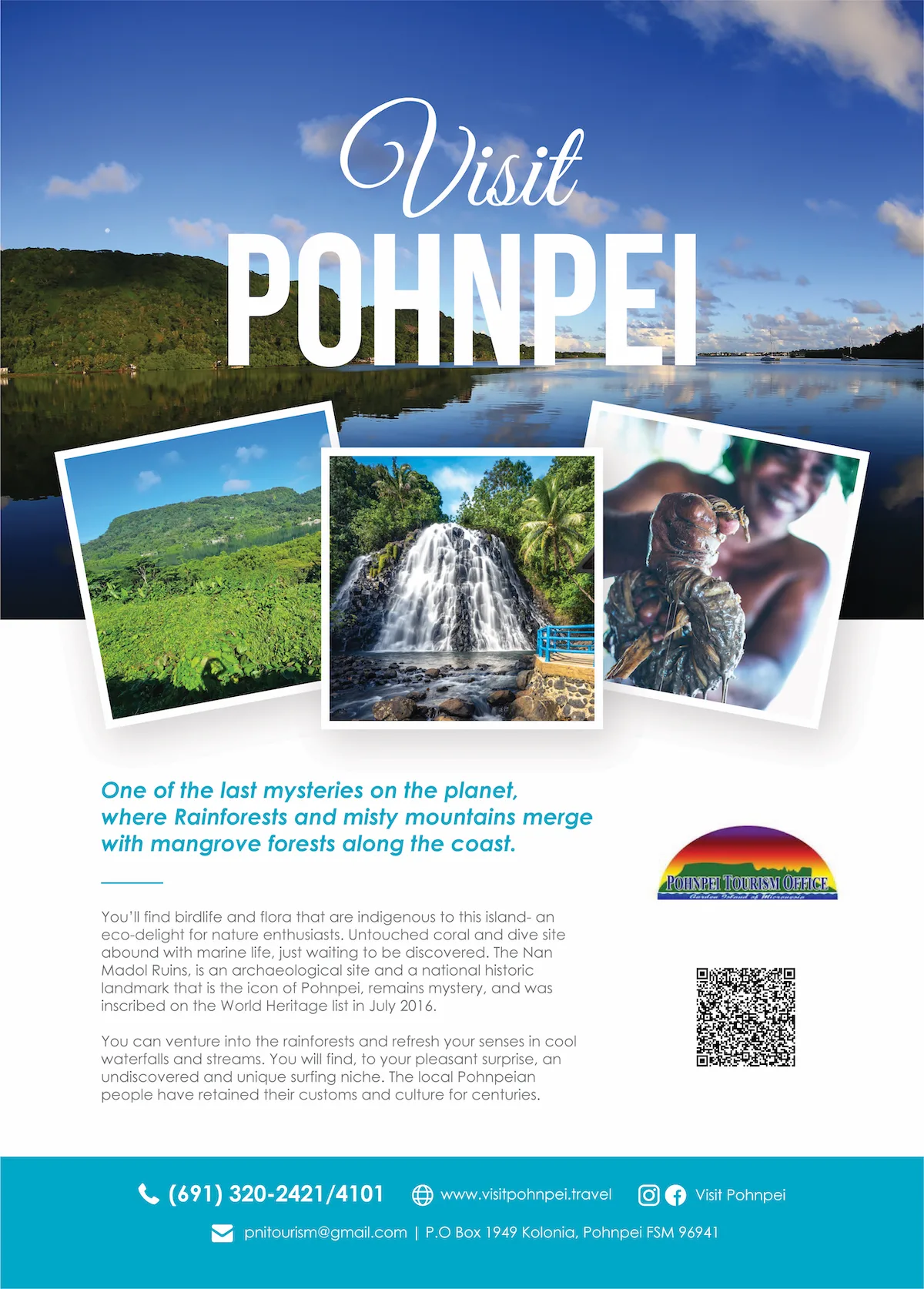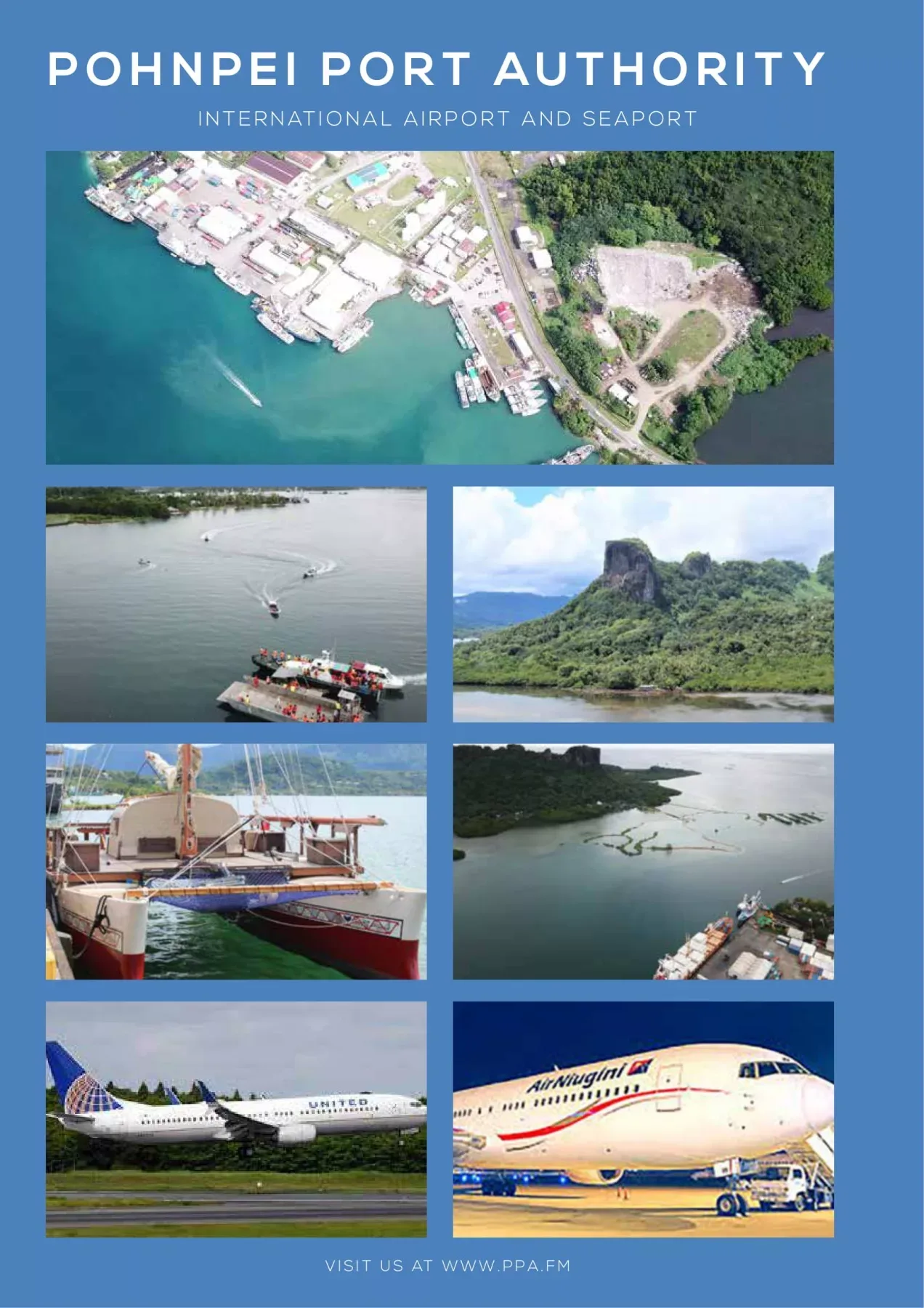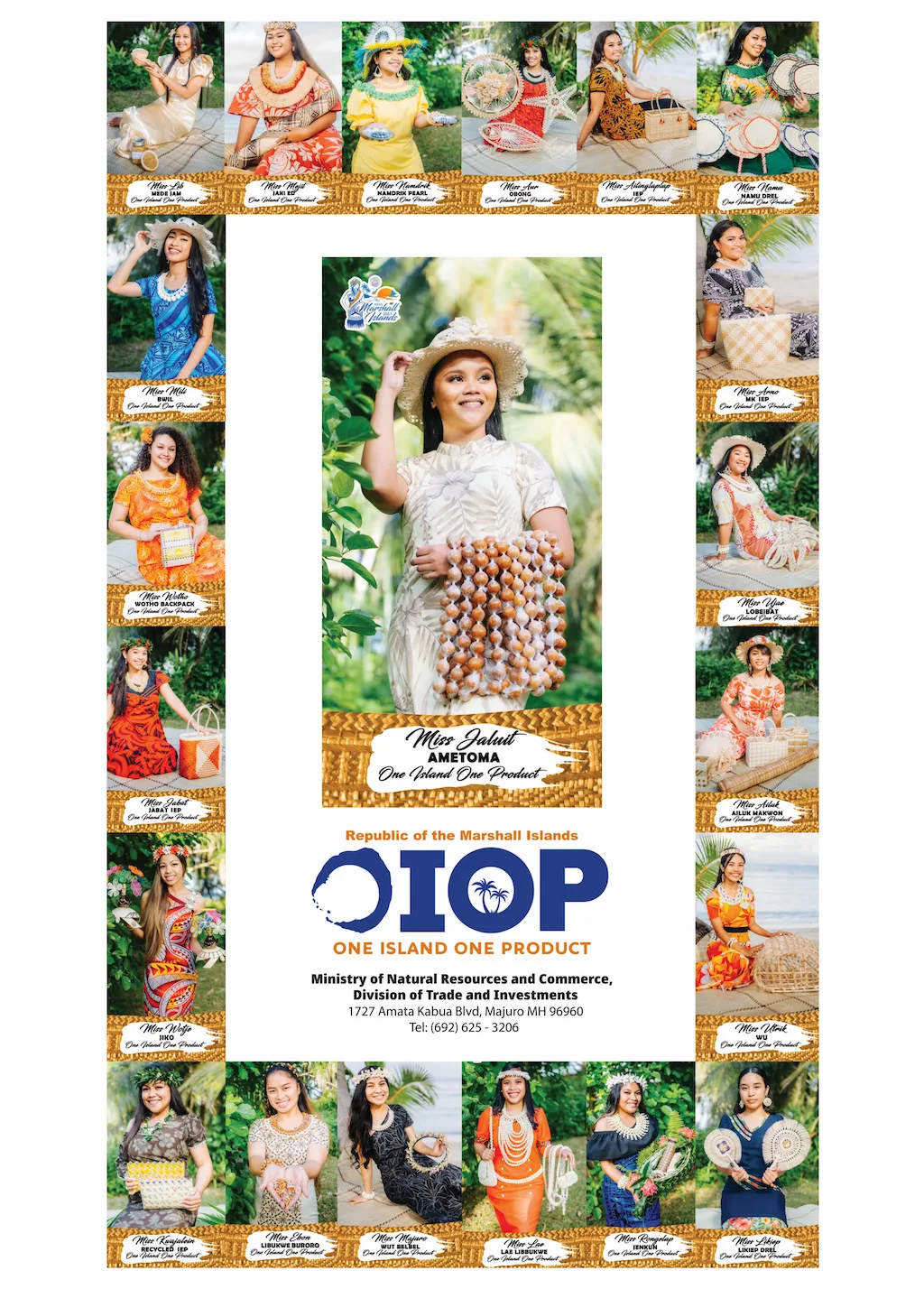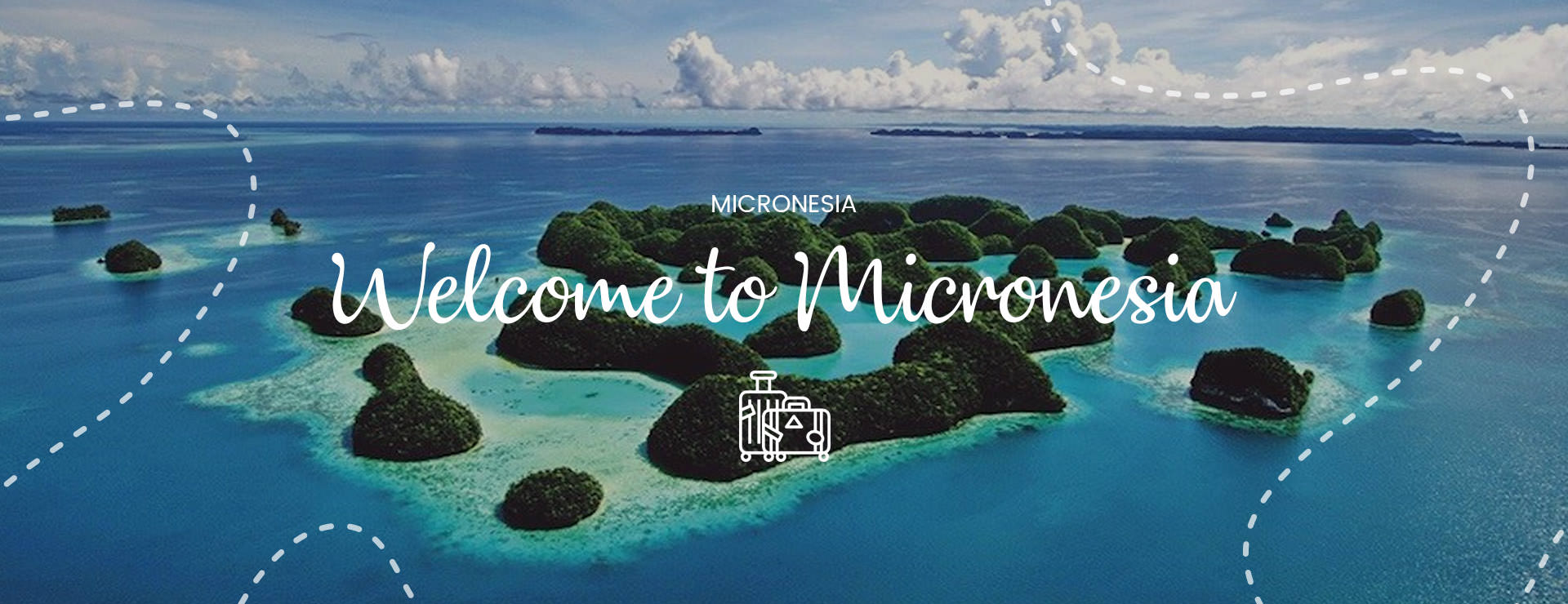
WELCOME TO MICRONESIA
Micronesia is in many respects a tropical paradise. A romantic, uspoiled destination for the world traveller, the islands offer culture, adventure, and breathtaking landscape. Micronesia has a long and storied history, and today is rich in both traditional cultural practice and diversity.
The Commonwealth of the Northern Mariana Islands
A United States Commonwealth, the Commonwealth of the Northern Mariana Islands (CNMI) forms the Mariana Islands archipelago. With a tiny land mass, the 607 islands are home to just 104,590 people. Micronesia comprises the four states of Kosrae, Pohnpei, Chuuk (Truk) and Yap. The capital city is Palikir, on Pohnpei Island, a town of 4,600 people. Guam is the largest and most populous island.
The landscape
Micronesia has a tropical climate, with temperatures remaining relatively high throughout the year. Visitors can expect to enjoy 80° F temperatures all year round. The rainy season runs from July to October, whilst November to June are considered the dry season.
The islands of the Federated State of Micronesia (FSM) formed as the result of volcanic activity that occurred millions of years ago. This explains the astonishing landscape we see today. The islands include mountain peaks thrust above the surface of the water, surrounded by fringing reefs. Others are sunken islands, giving just rings of coral barrier reef and tiny island islets encircling coral and sand lagoons. FSM is also home to high rigged islands, 2,000-foot mountain peaks, deeply gorged river valleys, and hills, grassland, forests, and sandy beaches.
Early history
Micronesia’s history reaches back several thousand years, and is preserved through the nation’s oral histories, as well as its ruins and archaeological record. People have been living on the islands for between two and three thousand years. The first settlers are believed to have been travellers sailing east from Asia and north from Polynesia, and were thus people of sophisticated maritime knowledge.
In general, in fact, the geographical challenges posed by the nation’s size and location have meant that all of its settlers have been obliged to be resourceful. The successful societies and settlers have thus each demonstrated incredible innovation. Early residents crafted stone tools for fishing and building. They developed vessels for traversing the ocean, and built homes that allowed them to thrive in tropical climes and survive the occasional typhoon.
European Colonisation
Europeans first arrived in the 16th century, and the islands were occupied by Spanish and British settlers at various times over the next three centuries, though sustained European contact did not occur until the mid 1800s.
Portuguese explorer Ferdinand Magellan landed in 1521, and named the islands ‘Islas de las Velas Latinas’ (or, Islands of the Lateen Sails), and later to ‘Las Islas de los Ladrones’ (or, the Islands of Thieves).
Spanish settlers arrived less than a decade later, when Ãlvaro de Saavedra’s second attempt to cross the Pacific bringing him to the Marshall islands in 1529. In honour of King Charles II, Spanish navigators named Palau and Yap the ‘Western Caroline Islands’, and Chuuk, Pohnpei, and Kosrae the ‘Eastern Carolines’. Wake Island (Enen-kio, in Marshallese) was first sighted by Ãlvaro de Mendaña in 1567, but named after Samuel Wake, a British explorer who reached the island in 1796.
The islands of Kiribati were made a British colony in 1788, and named ‘the Gilbert Islands’ after the explorer Thomas Gilbert who reached them. John Fearn, a whale hunter, was the first Westerner to reach Nauru. He did so in 1798, and named it ‘Pleasant Island’.
The Marianas – named for Queen Mariana of Spain – were Spanish territories. However, in 1668, Guam became the first Spanish colony in Micronesia. The Spanish defeated the resistance of the people of the northern Marianas, moving them to Guam.
Spanish Jesuits opened a Catholic mission in Guam in 1668. They attempted to open further missions in Palau and Ulithi, but the priests were killed by the resistance and this mission was therefore stopped.
The global Pacific trade began in 1565, with the opening of the Manila Galleon Trade Route between Asia and South America/New Spain. In 1791, British East India Company ships were passing through the Western Carolines on their way to Asia. By the mid-19th century, the expanding whaling industry gave rise to the need for new ports to replenish ships and crews, and Kusaie (now Kosrae) and Ponape (now Pohnpei) were ideally placed.
German traders arrived in the 1860s, and had become the dominant presence in the region by the 1880s. Nauru became a German colony in 1886.
Under European colonisation, the islands’ populations declined significantly. The population of the Marianas prior to the Spanish arrival was approximately 50,000 people. This had been reduced to 3,500 by the beginning of the 17th century. The Marshallese population declined from 15,000 to 10,000 in the same period, and the Kosrae population from 3,000 to just 300. The decline can be largely attributed to disease and the loss of traditional ways of life.
Japanese Control
A League of Nations mandate took ownership of the islands from Germany after World War I, and granted formal control to Japan. Japan then made significant investments in agriculture, industry and commerce. Sugar cane, mining, fishing, and tropical agriculture became the major industries.
The Japanese government brought in huge numbers of labourers to work its newly developed phosphate mines and sugar plantations. At this time, the indigenous population numbered around 40,000 people. By 1935, there were 50,000 Japanese immigrants living in the islands, and by 1942, there were more than 96,000.
In 1941, Japan also took Guam and Wake Island from the United States, following heavy fighting. Japan also seized Nauru and the Gilbert Islands. Over a thousand people were forcibly displaced from Nauru, and sent to Chuuk to work as labourers. There were numerous bloody WWII battles on the islands, and many Micronesians suffered atrocities at the hands of Japanese soldiers.
United States trusteeship of Micronesia
Following World War II, with growing concern about the strategic military advantage the islands gave to Japan, the United States wrested control of the former Japanese colony. The UN Trusteeship of 1947 did not give the United States outright possession of the region, but allowed it to administer the islands and use them for defence purposes. It also made the United States responsible for developing the islands towards self-government or independence, according to the expressed wishes of the people.
The United States began conducting nuclear tests in the Marshall Islands in 1946. This continued until 1962, with over 60 devices detonated by the end of the period. The largest of these occurred in 1954, exposing hundreds of Marshallese Islanders to nuclear fallout. The tests had appalling physical and environmental effects, including illness that has lasted generations, displacement, social problems, and permanent destruction of islands’ landscapes, rendering them uninhabitable.
A UN report in 1961 harshly criticised the United States for its neglect of the islands, and JFK commissioned the Solomon Report in response. This report assumed that the islands would remain closely tied to the United States, and recommended increased economic and infrastructure development. President Kennedy also agreed budget increases and federal programmes.
Self-determination
This period saw rising demand from Micronesians for self-determination. In 1960, the UN General Assembly released the Declaration on Decolonization, recognising the right of all peoples to self-determination and calling for the end to colonial rule among the world’s non-self-governing territories.
In 1964, the Congress of Micronesia was established. In 1966, a political status commission recommended a move to ‘free association’. This was initially rejected by the United States, though it had relented by the 1970s. The partitioning of the Trust Territory of the Pacific Islands (TTPI) led to independence, albeit free association with the United States with special conditions.
The Organic Act of Guam was signed in 1950, and the island became an unincorporated territory. A civilian government, legislature, and judiciary were subsequently established. The people of Guam were also granted United States citizenship. Guam now has an elected governor and a non-voting representative in the United States House of Representatives.
The United States government retains strategic prerogatives in Micronesia, in return for its provision of financial subsidies and federal assistance, including weather service, aviation agencies, international postal service, and disaster relief. Different freely associated states in the region each have their own agreements, and these are detailed in the Compacts of Free Association (COFA). They each assert control over their internal and foreign affairs, with the exception of those issues affecting United States strategic interests. Though their people are citizens of their respective states and not the United States, they are also ‘habitual residents’ of the United States, meaning they are allowed to enter and work in the United States and its territories without visas or work permits.
Social systems and lineage
Micronesian social systems are generally based on complex ranking systems, and they differ from one island to another. Some islands may have a single individual with an almost kingly or chiefly status, whilst others have groups of high-ranking individuals governing the island. In the atolls of the Carolines, we find egalitarian social structures, with lineages ranked according to the order in which groups first settled in the district.
Micronesian communities are structured by lineage. Members of a lineage hold and work land together, interacting together with other lineages. Each community also comprises different clans, who can in turn be dispersed among different communities on different islands. Members of a clan are obligated to protect one another and the shared resources.
Inheritance is usually matrilineal, though patrilineal and mixed group lines of descent also occur. Matrilineal ties are viewed as more endurable than patrilineal ties, which are generally considered impermanent.
In the matrilineal societies, offspring take membership of their mother’s clan. Siblings are ranked by birth order, and then children within a lineage are further ranked by their mother’s birth order. The clans are also ranked according to a hierarchy, and the leaders of high-ranking clans occupy leadership roles for the entire community.
Currency
The United States dollar is the currency of Micronesia. However, the island of Yap is famous for its currency of Rai stones (‘stone money’). These large disks of calcite reach up to four metres in diameter, with a hole in the middle, and there are believed to be some 6,500 on the island. There are five types of coin (Mmbul, Gaw, Ray, Yar, and Reng), and they are not usually moved when traded.
Economy
Micronesia’s cash economy is almost entirely dependent on United States aid. The country receives approximately $100 million per year from the United States in Compact of Free Association funds and supplementary grants.
The country’s commercial production is very small scale and largely consists of subsistence produce. There are just two garment factories. Fresh fruits, vegetables, and fish are sold in roadside markets, and handicrafts made from local materials are manufactured for tourists. This latter trade remains limited, as the tourist industry itself does, due to the country’s remote location and lack of facilities.
Religion
Micronesians traditionally practised ancestor-worship, though today the nation is Christian. Half of the people are practising Catholics, and a further 47% are Protestant. The remaining 3% are of small Christian denominations.
European occupation brought Micronesia into contact with many European tools, practices and ideas, including Christianity and democracy. It also brought alcohol, gambling, and prostitution. American missionaries from the American Board of Commissioners for Foreign Missions (ABCFM) arrived in the 19th century, seeking to counteract the negative impact of the Europeans, and promote Christianity in the region. They also brought Western medicine, and quickly gained influence in the society.
Historic sites
The Lelu ruins in Kosrae, from 1400 AD, and the Nan Madol ruins of Pohnpei (1000 AD) are just two examples of the historic sites on the islands. The ruined city of Nan Madol is another. Located on the island of Pohnpei, the historic city was the capital of the Saudeleur Dynasty until 1628, and consists of a series of small artificial islands linked by a network of canals.
We also find today the remains of the Catholic Belltower, a historic tower at the Catholic Mission in Kolonia, on the island of Pohnpei. The belltower and adjoining masonry apse are all that remain of a church built in 1909 by German Capuchin missionaries.
Languages
English is the official language of Micronesia. The most commonly spoken indigenous languages are as follows: Yapese, Ulithian, Woleaians, Chuukese, Pohnpeians, Kosraeans, Nukuoro, and Kapingamarangi. Many elderly Micronesians are also fluent in Japanese. The linguistic diversity is reflective of the country’s long history and resulting cultural richness.
Food
The Micronesian diet is largely based around rice, fish and seafood. Plentiful fruits also grow on the islands. Chickens and pigs are reared locally, though they are usually reserved for feasts, and not eaten on a daily basis.
Food has huge social and symbolic significance in Micronesian culture, and is the focus of most ceremonial occasions. Micronesians share food to express solidarity and validate kinship ties, and express respect for elder members of the community by ensuring they eat first at meal times. Rights, duties, and obligations are all acknowledged and reaffirmed by practices of eating and sharing and serving food.
The arts
Micronesia’s most treasured art forms are its songs and dance. These traditional art forms reflect and nurture notions of clan and community solidarity and pride. The stick dance is one example of a traditional dance which is still enjoyed today. The choreography sees lines of dancers execute complex movements whilst striking long sticks.
Flowers are commonly used as decorative items and body ornaments, strung together as garlands around the head or neck, or around ears. Men and women are often tattooed, with mature men not infrequently covering their entire bodies in tattoo art.
Textile weaving using threads created from the trunks of banana plants and fibres from hibiscus bark, and coloured with natural dyes, is common in the Carolines. The weavers, usually women, use looms to create fabrics for women’s skirts and men’s loincloths, typically with geometric patterns or stripes. Kosrae and Pohnpei are known for their production of decorated woven belts and sashes.
Wood and stone working are both common. Items from masks to ocean-going canoes are typically made from wood, and Palau is home to elaborate carvings in the designs of grand meeting houses (bai). As well as crafting stone tools, many Micronesians work with stone to build huge stone pillars (latte). There is a vast complex of islets and channels in Nam Mahdol in Pohnpei, which is an astonishingly grand example of Micronesia stone workmanship.
For more information contact
Palau Visitors Authority
Address: PO Box 256, Koror, PW 96940
Phone: +680-488-2793/1930
Email: [email protected]
Website: www.pristineparadisepalau.com
Fax: +680-488-1453

